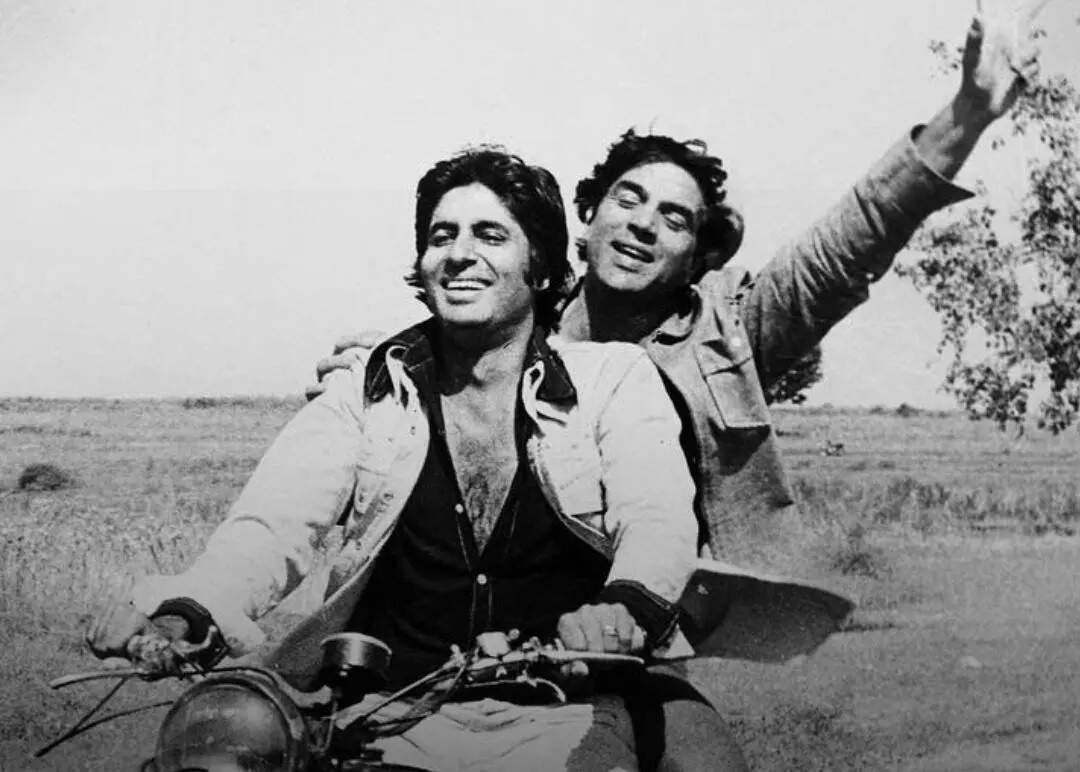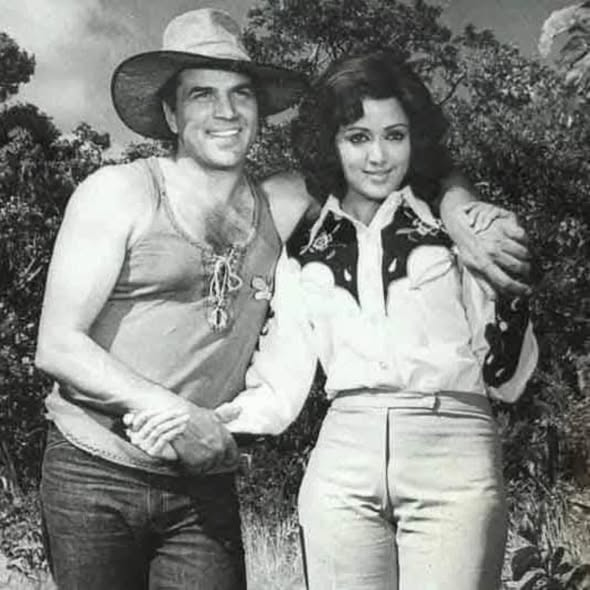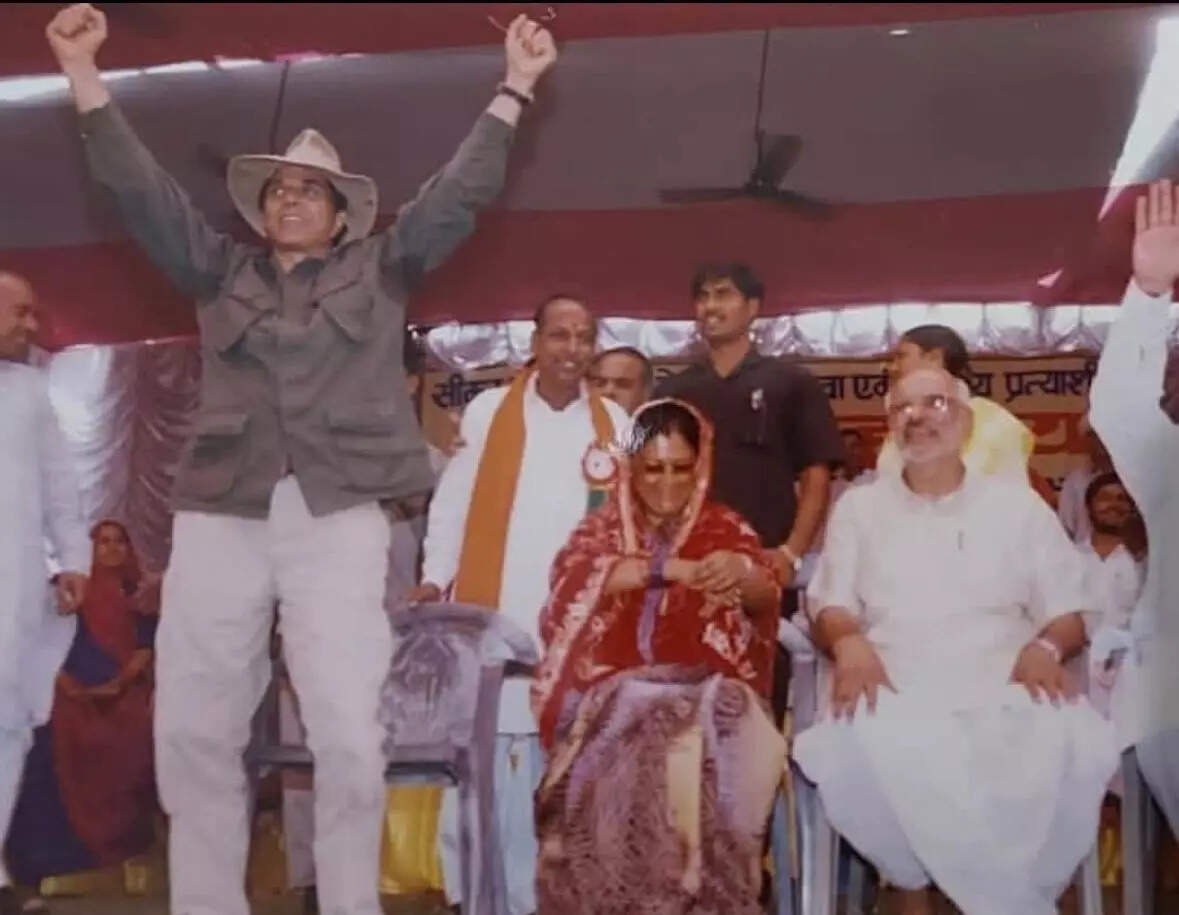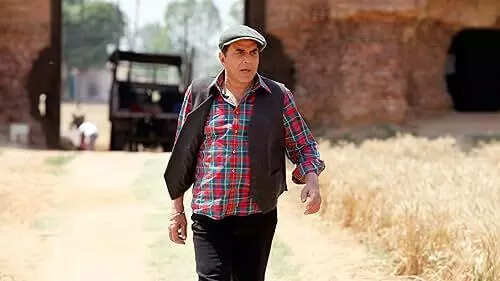The passing of veteran superstar Dharmendra on November 24 left the nation heartbroken, with an outpouring of grief from fans, colleagues, and the Hindi film fraternity. The actor, who would have turned 90 on December 8, passed away at 89 after weeks of fluctuating health. He had been placed on a ventilator due to breathing difficulties and was later discharged home, where he continued treatment until his demise.Survived by his first wife Prakash Kaur and their children Sunny Deol, Bobby Deol, Ajeta and Vijayta, and by his second wife Hema Malini and daughters Esha and Ahana, Dharmendra leaves behind a cinematic legacy few can match. As the industry mourns, ETimes spoke to producer Anand Pandit, who reflected on the superstar’s unmatched charisma, his simplicity, and the extraordinary bond he shared with audiences for over six decades.
‘There was never a distance between the man and the star’

Calling Dharmendra the “true people’s hero,” Anand Pandit believes that the actor’s relatability came from an authenticity that remained unchanged throughout his life.“Dharmendra ji was born in Nasrali, a small village in Punjab’s Ludhiana district, and his early life in rural Punjab shaped him,” Pandit says. “He often reminded people that he was a farmer’s son, and that grounded identity stayed with him. When audiences saw strength, warmth, dignity and emotional honesty on screen, it was not a performance. It was who he genuinely was.”According to Pandit, Dharmendra’s humility was never a crafted persona but an extension of his personality. “His sincerity was not crafted, and his humility was never an act. Along with his personality, his physique and natural charisma earned him admiration across generations and eventually the titles of ‘He-Man’ and ‘Son of the Soil’.”
A legend shaped by romance, action and emotional depth

Dharmendra’s career—spanning over sixty years—cannot be boxed into a single genre. From sensitive romantic roles to high-energy action films, each phase contributed to his iconic status.While he debuted with Dil Bhi Tera Hum Bhi Tere in 1960, Pandit believes that films like Bandini and Anupama showcased “a depth and gentleness rarely seen in mainstream cinema at the time.”“What I find interesting is how each phase shaped his legacy,” he says. “His early romantic roles turned him into a national heartthrob and brought in a new idea of masculinity that was tender rather than intimidating.”The action era then cemented his superstardom. “In 1973, he delivered eight consecutive hits, and in 1987, seven. Very few actors in Hindi cinema have achieved that kind of consistency,” Pandit notes. “Roles in Mera Gaon Mera Desh, the playful Veeru in Sholay, and films like Ram Balram and Dharam Veer established him as a heroic force.”For Pandit, it is the seamless combination of romance, action and emotional storytelling that created the legend.
The magic of Dharmendra–Hema Malini: A cinematic romance etched in history

One cannot speak of Dharmendra’s romantic legacy without acknowledging his iconic on-screen pairing with Hema Malini.“The chemistry between Dharmendra ji and Hema Malini ji remains one of the most memorable partnerships in Indian cinema,” Pandit says. “It was not just romantic. It had grace, restraint and a quiet poetry to it.”Their pairing elevated not just their films, but the very language of Bollywood romance. “They created an idea of love that felt sincere, dignified and deeply emotional. Even today, when people talk about iconic screen couples, their names are always at the top.”
‘He never worked for critical validation’
Although Dharmendra received honours like the Padma Bhushan (2012) and the Filmfare Lifetime Achievement Award, Pandit believes that the superstar defined success differently.“Dharmendra ji never worked for critical validation,” he says. “He belonged to a time when an actor’s worth was defined by audience affection—how people filled theatres on day one, how they celebrated their hero.”In his case, Pandit says, “the love of the masses and the longevity of his stardom speak louder than any award ever could.”
A star who expanded what a leading man could be

From the rugged hero of Phool Aur Patthar to the timeless entertainer in Sholay, and even the charming grandfather in Rocky Aur Rani Kii Prem Kahaani, Dharmendra remained relevant across eras.Pandit believes the superstar’s greatest contribution lies in his unparalleled versatility.“He expanded the idea of what a leading actor could be,” he says. “Even though he became a symbol of strength and action, he was equally convincing as a gentle poet or a sincere romantic lead. That balance was rare.”And his appeal extended beyond cinema. “The fact that he was elected as an MP from Bikaner shows that his connection with people was not limited to the screen. Wherever he went, he carried the same authenticity.”
A hero who united rural and urban India

While many stars appeal to specific audiences, Dharmendra’s magnetism transcended geography and class.“Dharmendra ji had a rare ability to connect with every part of India,” Pandit says. “For rural audiences, he felt familiar and emotionally rooted.”Even endorsements were a reflection of common people’s trust. “He became the preferred face for products aimed at everyday Indians because he felt like one of their own.”Urban audiences were equally drawn to him. “His charm, his values, his effortless screen presence—these allowed him to connect across age groups, regions and social backgrounds,” Pandit adds.This universality, he says, is why Dharmendra remained loved for over six decades: “People not only admired him but loved him, and he will remain in a class of his own even in the times to come.”
A legacy etched forever
As tributes continue to pour in, Anand Pandit’s words capture what millions feel: Dharmendra was more than a superstar—he was a symbol of warmth, sincerity, and timeless heroism.His legacy lives on not just in films, but in the hearts of those who saw in him a reflection of honesty, humanity and hope. Go to Source



